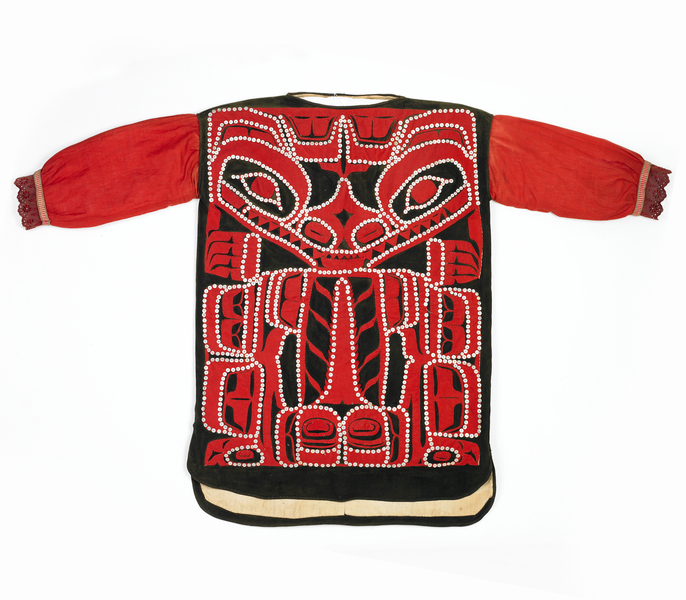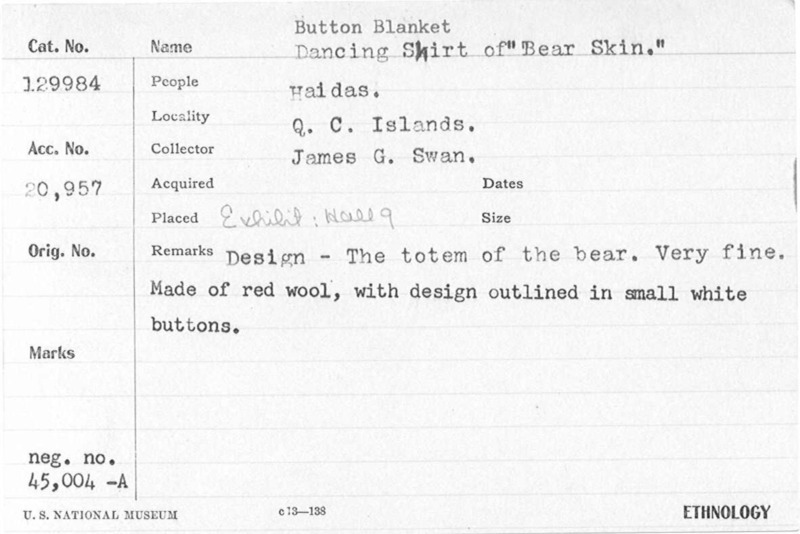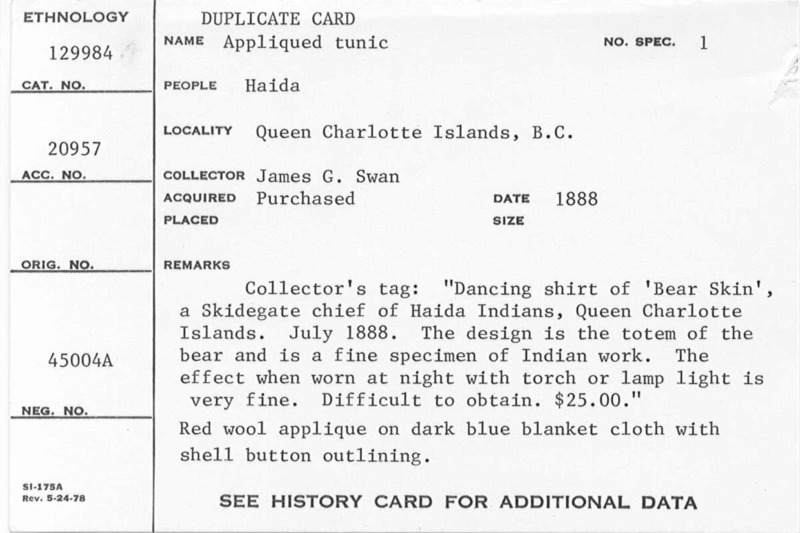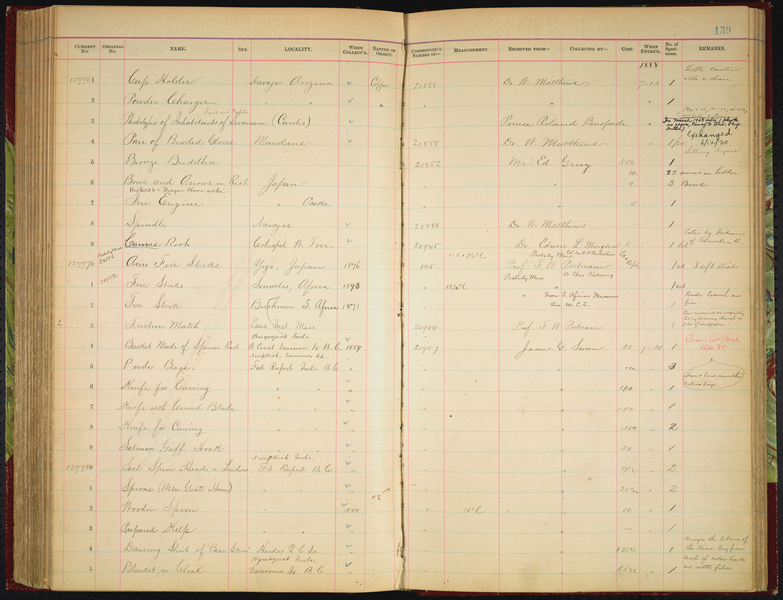Appliqued Dance Tunic Item Number: E129984-0 from the National Museum of Natural History




Notes
Object has two catalogue cards. From older card: "Button Blanket, Dancing Shirt of "Bear Skin." Design - the totem of the bear. Very fine. Made of red wool, with design outlined in small white buttons." From newer card: "Appliqued tunic. Collector's tag: 'Dancing shirt of 'Bear Skin', a Skidegate chief of Haida Indians, Queen Charlotte Islands. July 1888. The design is the totem of the bear and is a fine specimen of Indian work. The effect when worn at night with torch or lamp light is very fine. Difficult to obtain. $25.00.' Red wool applique on dark blue blanket cloth with shell button outlining."This object is on loan to the Anchorage Museum at Rasmuson Center, from 2010 through 2027.Source of the information below: Smithsonian Arctic Studies Center Alaska Native Collections: Sharing Knowledge website, by Aron Crowell, entry on the artifact http://www.alaska.si.edu/record.asp?id=645, retrieved 5-6-2012: Tunic, Haida. This late nineteenth-century dance tunic is made of red wool appliqué on black wool cloth and shows a bear crest design outlined in small shell buttons. The sleeves are red cotton with lace ruffles at the cuffs. Collector James Swan purchased it from Bear Skin, a Skidegate chief. Haida artists invented appliqué dance blankets and tunics around 1850, ornamenting them with dentalium shells, mother of pearl buttons, and squares of abalone shell. Florence Davidson said that they were first made in Masset after a missionary forbade the raising of totem poles; the blankets and tunics were an alternative way for people to show their clan crests.
Item History
- Made in Skidegate, British Columbia, Canada
- Collected by James G. Swan in Skidegate, British Columbia, Canada during 1888
- Received on July 26, 1888
What
- Name
- Appliqued Dance Tunic
- Identification Number
- E129984-0
- Type of Item
- tunic
Who
- Culture
- Haida
- Field Collector
- James G. Swan
Where
- Holding Institution
- National Museum of Natural History
- Made in
- Skidegate, British Columbia, Canada
- Collected in
- Skidegate, British Columbia, Canada
When
- Collection Date
- during 1888
- Acquisition Date
- on July 26, 1888
Other
- Accession Number
- 020957